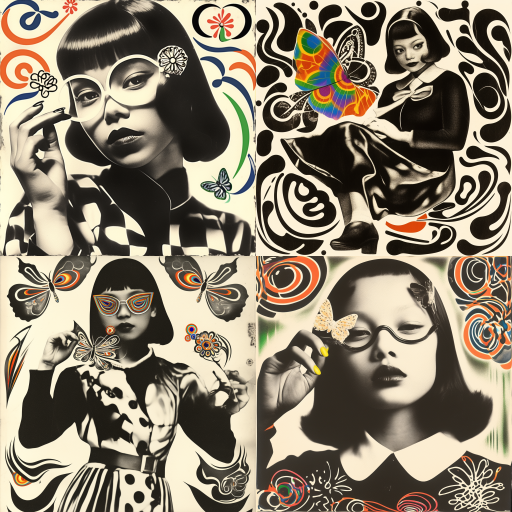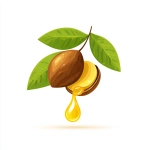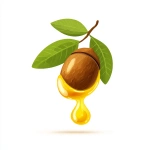Explore the Best AI Image Gallery

Harnessing SaaS Solutions: Transforming Creative Industries
Software as a Service (SaaS) has emerged as a transformative force across various sectors, offering innovative tools that streamline workflows, enhance collaboration, and drive creativity. In the creative industry, SaaS solutions are not merely tools but are becoming essential partners in the creative process. This blog post explores the impact of SaaS on the creative sector, potential uses, ethical considerations, and future trends in this dynamic landscape.
The Impact of SaaS in the Creative Industry
SaaS solutions have revolutionized the way creative professionals and teams work. Unlike traditional software, which requires installation and complex setups, SaaS platforms are accessible from anywhere via the cloud, enabling seamless collaboration among remote teams. For instance, tools like Adobe Creative Cloud, Canva, and Figma allow designers, marketers, and content creators to work on projects in real-time, regardless of their geographical locations. This not only enhances productivity but also stimulates creativity, as diverse ideas can be shared and cultivated swiftly.
Potential Uses of SaaS in Creative Work
There are numerous ways in which SaaS tools can be utilized in the creative industry, such as:
- Design and Prototyping: SaaS platforms like Sketch and InVision enable designers to create prototypes that can be tested and shared with stakeholders for feedback instantly.
- Project Management: Tools like Trello and Asana foster organization within creative teams by providing workflows that streamline project timelines and responsibilities.
- Marketing and Content Creation: SaaS applications such as HubSpot and Buffer assist marketers in planning, executing, and analyzing marketing campaigns with ease.
- Collaboration and Feedback: Using platforms like Slack or Miro, creative teams can engage in discussions, share ideas, and receive feedback to improve their projects efficiently.
- Stock Asset Management: Websites like Shutterstock and Adobe Stock offer vast libraries of images, graphics, and videos that can be accessed quickly and integrated into different creative projects.
Ethical Considerations Surrounding SaaS Solutions
As the creative industry increasingly adopts SaaS solutions, several ethical considerations arise that merit attention. Issues such as data privacy, security, and intellectual property rights are significant concerns. Since SaaS offerings often require users to upload their work to external servers, there is a risk of data breaches and unauthorized access. Companies must implement stringent security measures and educate users on best practices to protect their creative outputs.
Additionally, the use of AI-driven SaaS tools raises questions about ownership. When a piece of AI-generated art is created using a SaaS tool, who owns the rights to that artwork? As AI evolves, so too must the legal frameworks surrounding creative ownership. This situation creates a pressing need for dialogue among industry stakeholders to establish fair use policies and guidelines.
Future Trends in SaaS for the Creative Sector
Looking ahead, the integration of SaaS solutions in the creative sector is likely to grow exponentially. Here are some trends to watch for:
- Increased Personalization: SaaS providers will continue to enhance the personalization of their offerings through AI and machine learning, tailoring tools to meet individual users' preferences and needs.
- Remote Collaboration Technology: As hybrid work environments become the norm, SaaS platforms will adapt to facilitate more robust and immersive collaboration experiences, possibly incorporating virtual and augmented reality features.
- Subscription Models and Accessibility: The SaaS subscription model will become increasingly appealing to smaller creative firms and freelancers, democratizing access to advanced tools that were previously too expensive.
- Integration of Advanced AI: The future will see the rise of more sophisticated AI algorithms that not only assist in design but also generate creative outputs, allowing users to focus on higher-level strategic thinking rather than repetitive tasks.
- Emphasis on Sustainability: As awareness about environmental issues grows, SaaS companies will likely focus on creating sustainable practices, not only in their operations but also in the functionalities they offer to support eco-friendly creative solutions.
Conclusion
SaaS solutions are reshaping the creative industry by providing versatile and powerful tools that enhance collaboration, boost productivity, and encourage innovative approaches to project management. While ethical considerations surrounding data privacy and ownership must be diligently addressed, the advantages these solutions offer cannot be understated. Looking into the future, the creative sector's embrace of SaaS will continue to open up new possibilities, driving both creative expression and practical efficiency to new heights.

](https://images.ai-img.art/thumbnails/150/fe996254fcb758c1365f3a22783ee6112ed5e34579deb401de674b06938efb2a.webp)




](https://images.ai-img.art/thumbnails/150/b94716d4b88da3e1ec3ab12162616a52ff5698251ac791ddf8478649889a0f47.webp)

](https://images.ai-img.art/thumbnails/150/4c5bdb0a0a1f761a911521333b9e3463c885aa247b42d1d311a97f2aa2c513d2.webp)











](https://images.ai-img.art/thumbnails/150/469bffae134ea97666025052588e76bb4dd4b6b98c4888cfd7873929a73156ff.webp)








](https://images.ai-img.art/thumbnails/150/4c67c727683a835917441757b71ace563950f9178fa4826e09a55cfb092ac715.webp)


](https://images.ai-img.art/thumbnails/150/985b7bf314caa205e59a2c973e979ce77cf5b24ca39799fffe2e30ea7c79ef07.webp)







